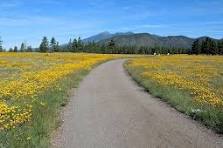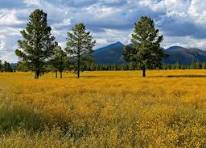Realty Executives of Northern Arizona
|
|

 The Loop Trail: A popular 2-mile loop trail circles the park, offering panoramic views of the surrounding landscape, including Mount Elden and the San Francisco Peaks. The trail is flat and accessible, making it popular with walkers, runners, and cyclists.
The Loop Trail: A popular 2-mile loop trail circles the park, offering panoramic views of the surrounding landscape, including Mount Elden and the San Francisco Peaks. The trail is flat and accessible, making it popular with walkers, runners, and cyclists.
Buffalo Park is just one of many beautiful trails and hiking areas around Flagstaff. When you are ready to buy or sell in Northern Arizona, come by our office, or give us a call! We have an agent onsite Monday through Saturday.
What is a CLUE Report or History Loss Statement?
A CLUE report, generated by LexisNexis (a consumer reporting agency that maintains a large database of consumer claims submitted by insurance companies) details homeowners insurance claims made on a property within the past seven years. Insurance companies use these reports to help determine the cost of homeowners insurance based on the property’s claims history, among other criteria.
Why Should Homebuyers Care About CLUE Reports?
CLUE reports can reveal potential problems with a property, such as water damage, foundation issues, or mold. Knowing about these past issues can help you anticipate future maintenance needs and potential insurance costs. For instance, multiple claims for water damage might suggest recurring issues that could lead to mold, which might increase your homeowners insurance premiums.
What Information is Included in a CLUE Report?
A CLUE report includes the homeowner’s name, personal details, policy number, date of claims, types of loss, and the amounts paid by the insurance company for each claim. It may also contain general information about insurance providers and the nature of the claims.
How to Access a CLUE Report
Homeowners can obtain a copy of their property’s CLUE report for free once every 12 months, thanks to the Fair Credit Reporting Act. They can request this report from LexisNexis by calling 1-866-312-8076 or visiting www.consumer.risk.lexisnexis.com.
As a buyer, you cannot directly access a CLUE report for a property you’re interested in. However, you can ask the seller to provide it or make your offer contingent on receiving a satisfactory CLUE report. Additionally, when you apply for homeowners insurance, the insurance company will pull a CLUE report on the property so you will know about the claims history.
Come see us when you are looking to buy or sell in Northern Arizona!
Nestled at 7,000 feet near the base of the San Francisco Peaks, Flagstaff reigns as the mountain jewel in the crown of the desert state of Arizona. It beckons with its clear air, cool pine forests, and proximity to historic and natural attractions. Flagstaff is a region settled by varied cultures and built by strong men and women pioneers that made this city what it is today.
A Tale of Two Towns
Old Town Flagstaff, circa 1884
In 1883, the railroad decided to move their depot about a jalf mile east of the Flagstaff settlement so their trains didn't have to start up on the steep hillside. One of the local merchants, P.J. Brannen, saw this as an opportunity and decided to move his mercantile across from the depot. Others followed, building a strop of shops, saloons, and hotels along what became knows as Front Street. As a result, Flagstaff became two settlements: the original site called Old Town, and the site near the depot named New Town.
Old Town had water, but New Town had commerce and soon outgrew the older settlement. In 1884, a devastating fire burned down many of Old Town's buildings and New Town became the one and only Flagstaff. Its center was the intersection of Front and San Francisco Streets. Later Front Street would be called Railroad Avenue, but in 1926, the road became part of Route 66 and was renamed Santa Fe Avenue. In 1993, the road was renamed for the historic Route 66, and it continues to be a major thoroughfare of the city.
By the early 1890s, the young town of FLagstaff had reached a population of 1,500 and had become one of the largest towns in the territory. It had a well developed business district and homes were being built throughout the area. The inhabitants realized that the town would soon be too big to continue without some kind of formal organization.
Stay tuned for the final chapter: Part 4, Flagstaff Finds Success in Incorporation!
And when you are looking for information on the housing market around Flagstaff,
Come see us on Cherry Avenue, in historic downtown!